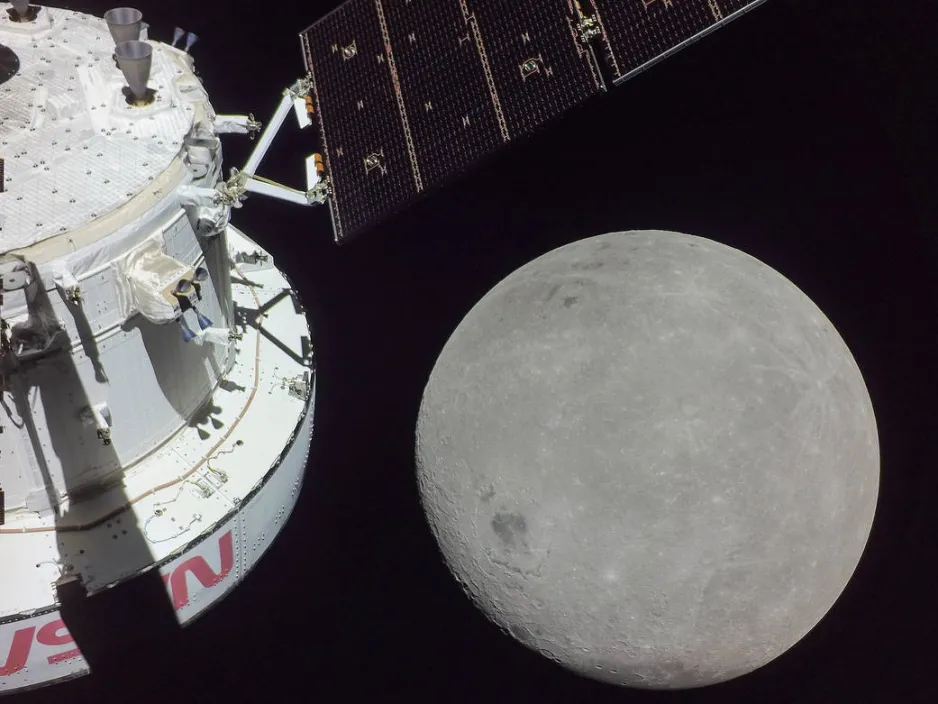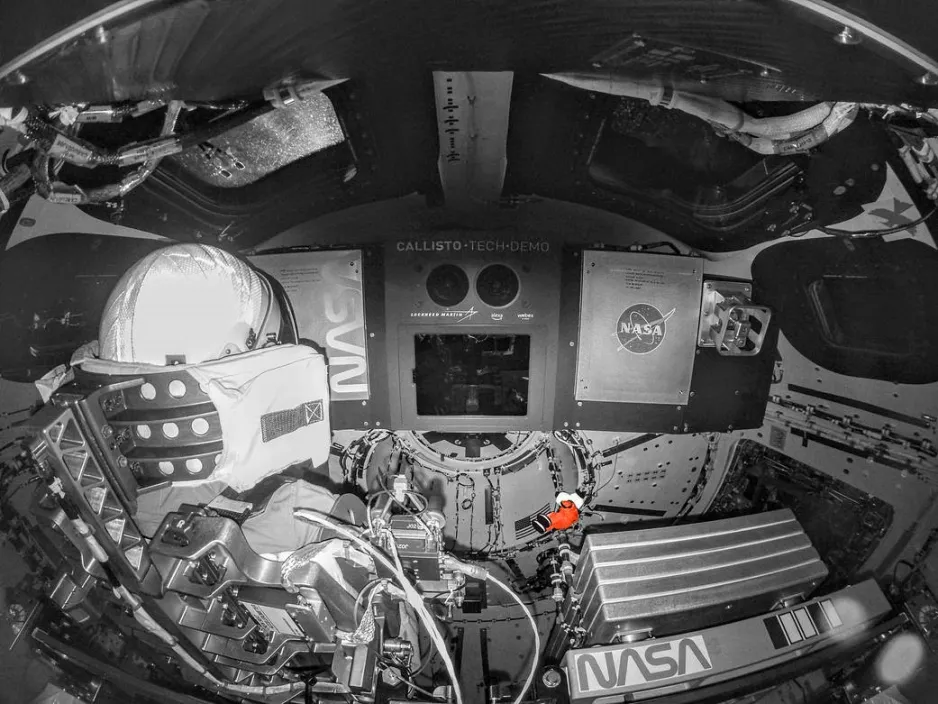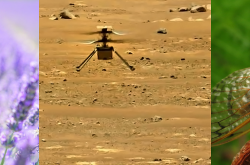Two things you should know about the science of wind chill, and the Orion spacecraft's selfies.
Meet Cassandra Marion and Michelle Campbell Mekarski.
They are Ingenium’s science advisors, providing expert scientific advice on key subjects relating to the Canada Aviation and Space Museum, and the Canada Science and Technology Museum.
In this colourful monthly blog series, Ingenium’s science advisors offer up quirky nuggets related to their areas of expertise. For the December edition, they explain the science of wind chill, and the spectacular selfies captured by the Orion spacecraft.

Wind chill: the science of making winter feel even colder
Have you ever been in this situation: It’s the middle of winter and you’re deciding how many sweaters to put on before leaving to run errands. You ask the nearest person (or the weather app!) how cold it is outside. In response, they may say something like: “It’s minus 15, but it feels like minus 20 with the wind chill.”
If you live in northern latitudes, you’re no stranger to the “wind chill.” As temperatures plummet, even the lightest breeze can make the air outside feel much colder than the number on the thermometer. But why is that? Let’s look at the science of wind chill.
Humans are warm-blooded, which means that our bodies generate heat. This heat warms anything nearby that is colder than your body. This is why after a few minutes of lying in bed, your sheets get nice and warm! When we stand in still air, our bodies heat the air surrounding us. This creates a thin layer of warm air around our bodies. The colder the air is, the more heat your body loses in order to warm the surrounding air. When the wind blows, it blows away the thin layer of warm air surrounding your body, stealing the heat that your body created. The faster the wind blows, the faster the heat is removed.
Atmospheric scientists and physicists use an equation to calculate how much heat is lost from an average person based on the surrounding air temperature and wind speed. This equation is what gives us the wind chill index. For example, at -20⁰C with 20 km/h winds, the wind chill makes it feel like -30⁰C.
And why does it feel colder? When you feel cold, what you’re actually feeling is the sensation of heat leaving your body. The faster the heat is leaving, the colder you feel. Since adding wind to cold temperatures makes heat leave your body faster, a cold and windy day will feel colder to you than an equally cold, windless day.
You can avoid the effects of wind chill by covering your skin with windproof layers. A thick coat will trap the warm air against your body and prevent the wind from blowing it away. Anywhere you have exposed skin (e.g., your face, ears, or hands) is at a much higher risk of frostbite since your body is not generating heat fast enough to keep the exposed skin warm.
The wind chill index is a guide for how extra-chilly you are going to feel on any given day of winter. Use it as a tool to protect yourself and others from cold conditions and stay warm out there!
By Michelle Campbell Mekarski

View of the Earth and Moon from the Orion spacecraft at its maximum distance from Earth.
Successful Artemis I mission’s Orion spacecraft captures images to inspire
The Artemis I mission successfully launched to the Moon on November 16, 2022! The Orion spacecraft was put in a distant retrograde orbit around the Moon – where the spacecraft orbits the Moon in the opposite direction to which the Moon orbits the Earth – and frequently sent back spectacularly beautiful imagery of itself, the Moon, and the Earth.
Artemis I was a 25.5 day-long uncrewed test flight of the Orion spacecraft and Space Launch System (SLS) rocket, the first of many missions intended to return humans to the Moon. Artemis II will be the first crewed mission in the series planned to launch no earlier than 2024, on which a Canadian astronaut will fly around the Moon.

The Orion spacecraft entered into orbit around the Moon, and on the sixth day of the mission took a selfie that includes part of the far side of the Moon.
A few hiccups occurred before the SLS launched, including a faulty temperature sensor, a few helium leaks, and a couple hurricanes, but the rocket launched majestically off the Earth on November 16, 2022. Once launched and in space, the mission proceeded as planned.
To capture the amazing views of NASA’s return to the Moon as well as collect important engineering and navigational data for the mission, a total of 24 cameras were installed: 8 on SLS and 16 on Orion. Most of the exceptional Earth and Moon views were captured by the cameras attached to the tip of each of the spacecraft’s four solar array wings on the service module. These cameras were also great for assessing the exterior condition of the capsule.

Inside the Orion capsule while in orbit around the Moon. Note the manikin on the left and the zero-gravity indicator Snoopy doll, centre-right.
Orion broke records: it officially achieved the farthest distance from Earth by a human-rated spacecraft, at 432,230 km, a record previously set by the Apollo 13 mission. The mission wasn’t aiming to break any records, but planned a really large orbit and high altitude around the Moon to intentionally stress the Orion spacecraft to test its limits.
The Artemis I’s mission consisted of a series of important tests completed with the Orion spacecraft including navigational star tracking, thruster control, as well as monitoring the environment and technology inside the cabin, such as measuring radiation exposure levels and testing the new voice assistant technology named Callisto.

A close-up of a portion of the Moon beyond the Orion spacecraft, taken on the 20th day of the Artemis I mission.
On December 5, the Orion spacecraft completed its second and final close pass by the Moon on its return path to Earth and executed a flawless re-entry into the Earth’s atmosphere and safely splashed down into the Pacific Ocean on December 11, 2022.
Go Further
Get the latest photos and video: https://go.nasa.gov/3TXYptr
By Cassandra Marion
A previous version of this article included a story on cuetlaxochitl (poinsettias).
Enjoying the Ingenium Channel? Help us improve your experience with a short survey!


























